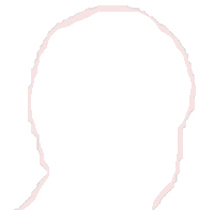Patrick Manion

B.Sc. (Honours) Thesis
Lithospheric flexural controls on landscape evolution during deposition and incision of the Beaufort Formation, western Canadian Arctic
(PDF - 19.1 Mb)
Lithospheric flexure in response to changing surface loads is an important control on surface processes and topography. The Northwest Passages are a series of waterways in the Canadian Arctic. The passages form interisland channels with depths up to 600 m. Long and in places straight escarpments, which have been previously interpreted as fault-line scarps, border some of the Arctic channels in the eastern Arctic. However, seismic data and field observations suggest the interisland channels in the western Arctic were initially a continuous coastal plain that was subsequently incised by streams and deepened by glaciers.
The uppermost pre-Quaternary unit is the Beaufort Formation. The Beaufort Formation is a sequence of mostly sandy and pebbly braided stream deposits interpreted to have comprised a coastal plain and now interpreted to have extended from Yukon to Ellesmere Island from 3.8 to 2.7 Ma ago. These fluvial sediments and their marine equivalent (part of the Iperk Formation) thicken toward the Canada Basin to 3 km.
This study tests whether the current topography and distribution of the incised Beaufort Formation on the Arctic Islands can be explained by flexure of the Arctic lithosphere in response to: 1) post-Miocene sediment loading of the Arctic continental margin, and 2) Pleistocene incision of the passages. A numerical lithospheric flexure model, gFlex, is applied to test the extent of subsidence by backstripping Pleistocene and Pliocene strata offshore. Models for flexural downwarping by offshore sediment loading predict sufficient flexure to accommodate the subaerially exposed sediments of the Beaufort Formation. The geometry of accommodation space explains the ribbon-like distribution of Beaufort Formation which parallels the Canada Basin margin from Banks Island to Meighan Island. The effect of erosional flexural rebound by channel incision is evaluated by iteratively excavating sediment from the channels until modern bathymetry is achieved after replacing sediment with water in the channels to modern sea-level.
Model experiments with 60-km lithospheric elastic thickness provide the most suitable fit to topography. Peripheral uplift (100’s m) on the Arctic islands closely reproduces the topography of Banks and Prince of Wales Island, but the model requires erosion of the channels and the islands since the Beaufort Fm was deposited. The model results, seismic data, and field observations support previous conclusions that erosive ice covered the western Archipelago islands, that ice streams caused much deeper erosion of the channels, and that the Northwest Passages were opened after 2.8 Ma as a result of erosion, not tectonics
Keywords: Canadian Arctic, flexure models, landscape evolution, Beaufort Formation, erosional isostasy
Pages: 97
Supervisor: Chris Beaumont / John Gosse



